CAMP DE LA LINIERE, France – While washing my hands in a communal area of the refugee camp, where some women were cleaning dishes, one of them asked me: “Oh, you’re new, where did you come from?” Another woman added, between the clanging of metal and the swishes of scrubbing: “And how long have you been here?”
These were the warmer days of June 2016 at France’s Camp de la Liniere, well before the refugees would need to battle the bone-chilling cold currently sweeping through Europe and the Balkans. The camp is situated in Grand-Synthe, on the outskirts of the historical French port town of Dunkirk, whose shores gaze longingly towards the land of safety and opportunity: the United Kingdom.
In the context of the camp, it would not have occurred to the women that I am a journalist. I fit the quintessential image of a refugee – black hair, dark eyes, olive skin, jeans, jacket and a bundled scarf. The splattered mud on my clothes only added to the effect. I looked just like everyone at the camp.
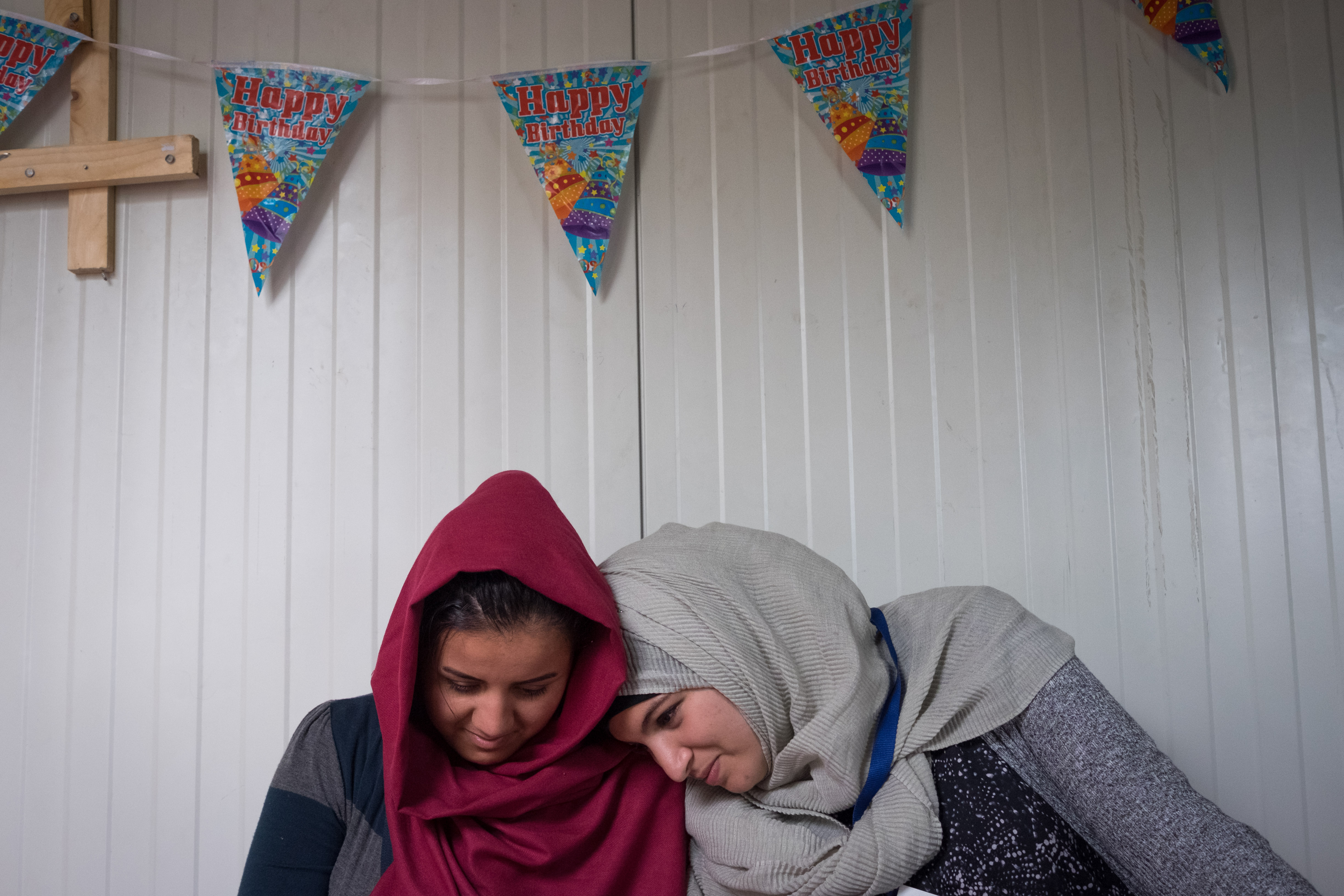
Hafsa Sabr (right) takes a moment to look at a photograph with a Kurdish refugee. Hafsa volunteers at the camp on a daily basis. (Razan Alzayani)
I was there to work on a story for Kerning Cultures, a podcast I co-founded in the fall of 2015 to dissect the complex narratives of the Middle East, at a time when the world appeared to be caught off guard by the refugee crisis that spilled over into Europe’s borders. Amid increasing xenophobia and right-wing populism in Europe, these issues remain as troubling as ever.
While the mainstream media has drawn the world’s attention to the refugee crisis over the past two years, their stories often focus on “what” a refugee is, rather than “who” refugees are. Our idea of who a refugee is has been replaced by what the person looks like, including clothes, cleanliness and ethnicity. These descriptors automatically associate refugees with poverty, lack of education and cultural “otherness.” The mission of Kerning Cultures is to reveal the individual stories and circumstances of displacement that go beyond these labels.
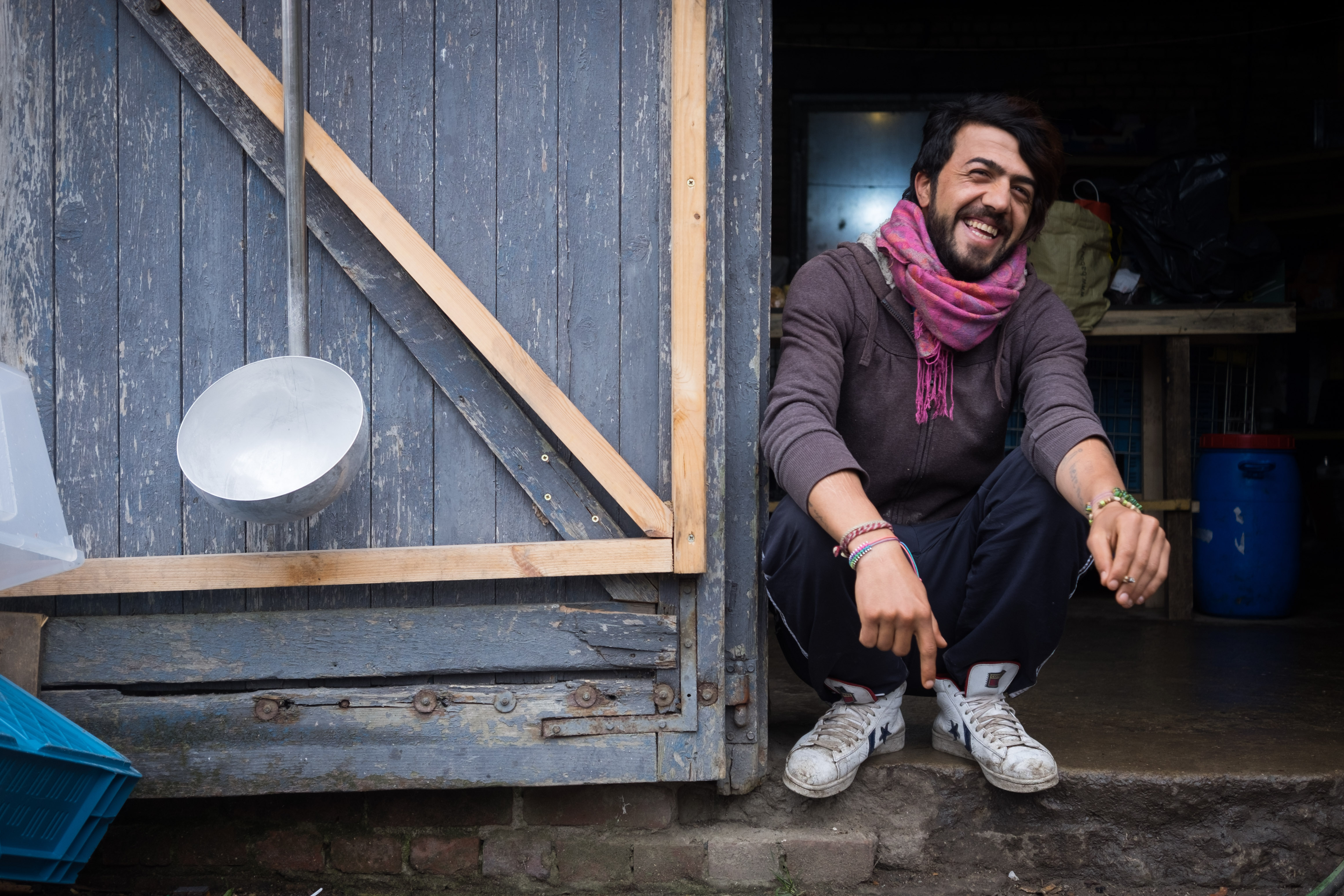
Hama Sheren, a kitchen hand and an Iraqi Kurdish refugee at Grand Synthe, jokes with his friends during a cigarette break. (Razan Alzayani)
At the time of my visit to Camp de la Liniere, the refugees living there had chosen Dunkirk as a transit point before trying to continue their journey to the U.K. because they had heard of the atrocious living conditions in Calais. Since the demolition of the Calais camp and other nearby settlements in October 2016, Camp de la Liniere has grown from 600 to 1,400 refugees according to volunteers at the camp, although the total population is constantly fluctuating.
Not too long ago, the people at the camp were landowners, storekeepers, PR agents, musicians, actors, farmers, doctors, lawyers. Displaced from their homes, they are now confined to the reductive description of “refugee.”
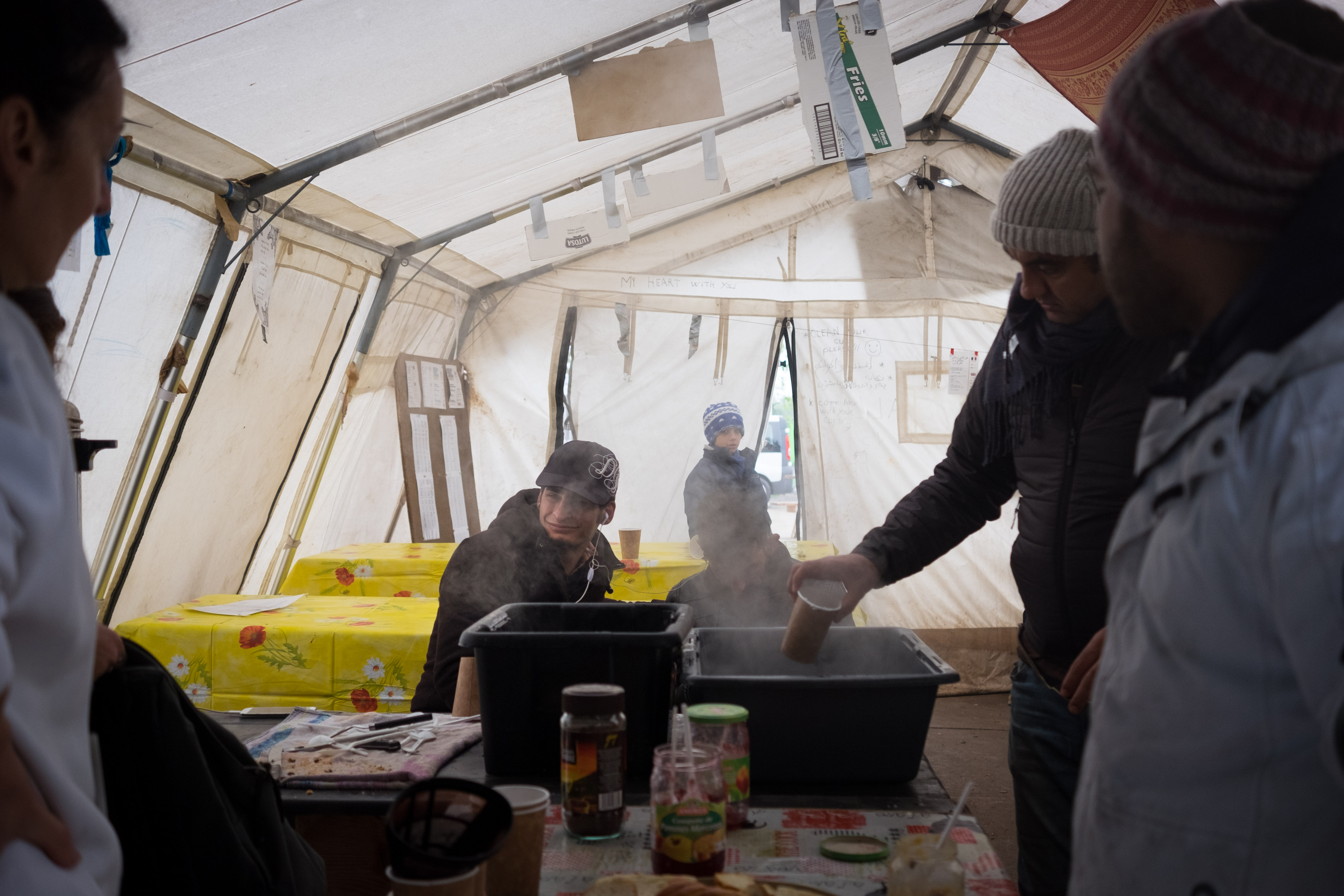
Migrants and volunteers enjoy a break in the tea tent. (Razan Alzayani)
Spending just a little time at Camp de la Liniere, it becomes clear that people here continue to strive despite the odds, while developing support systems based on shared experiences.
As with most homes, the heart of the camp is in the communal kitchen, where there is much laughter. During their breaks, the kitchen staff of European and migrant volunteers, break into impromptu dabke (folk-line dance), propelled by rhythms emanating from a weathered boom box.
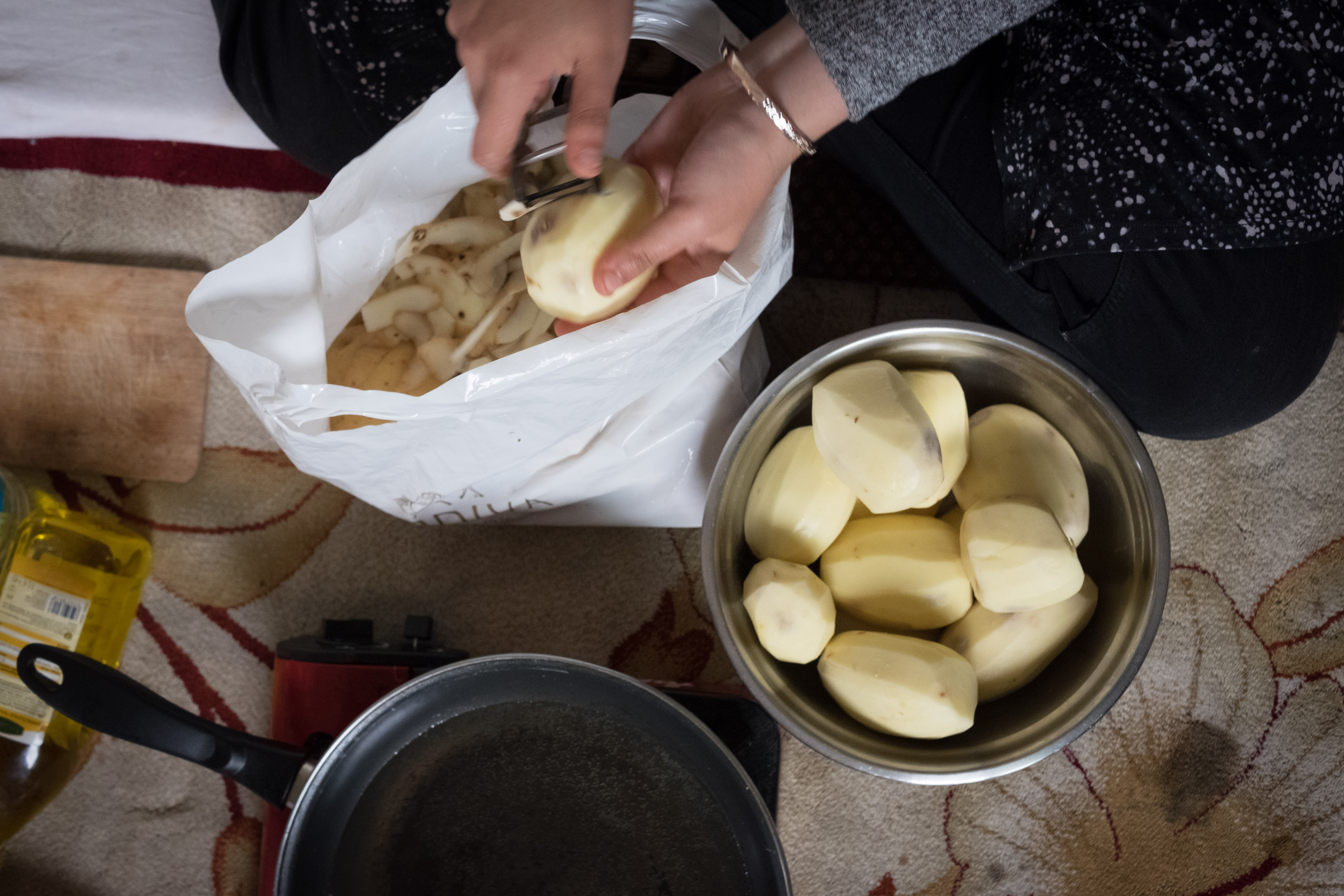
Refugees and local volunteers work together in the kitchen to prepare daily meals. Hafsa, a Dunkirk local, peels the potatoes. (Razan Alzayani)
Once they return to the kitchen, the group maintains a steady pace of work, only breaking for tea. A natural camaraderie has developed among the men, who stand shoulder to shoulder during smoke breaks, steaming tea in their hands. Discussion ranges from politics, escape and freedom to teasing each other about the girls they liked.
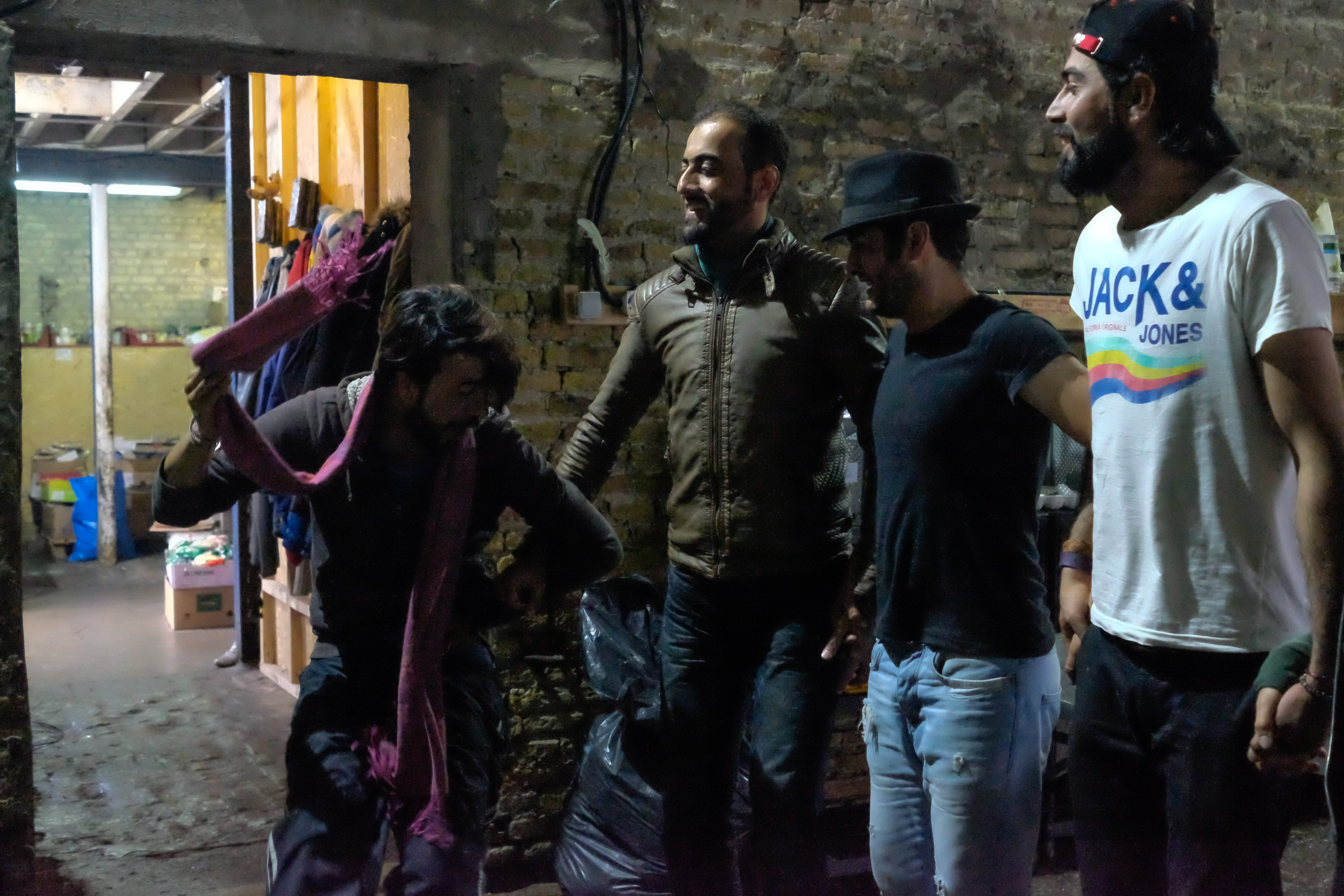
Hama Sheren (far left) and other Iraqi Kurdish refugees living in the camp dance dabke during a cigarette break. (Razan Alzayani)
Resilience among this group comes with a mixed bag of emotions. Despair and hope are interspersed with anguish and contentment. Periods of grief are peppered with moments of joy.
It’s undignified to live this way, many of them tell me, to be reduced to living in chicken sheds. They are ashamed to be seen living in such conditions.
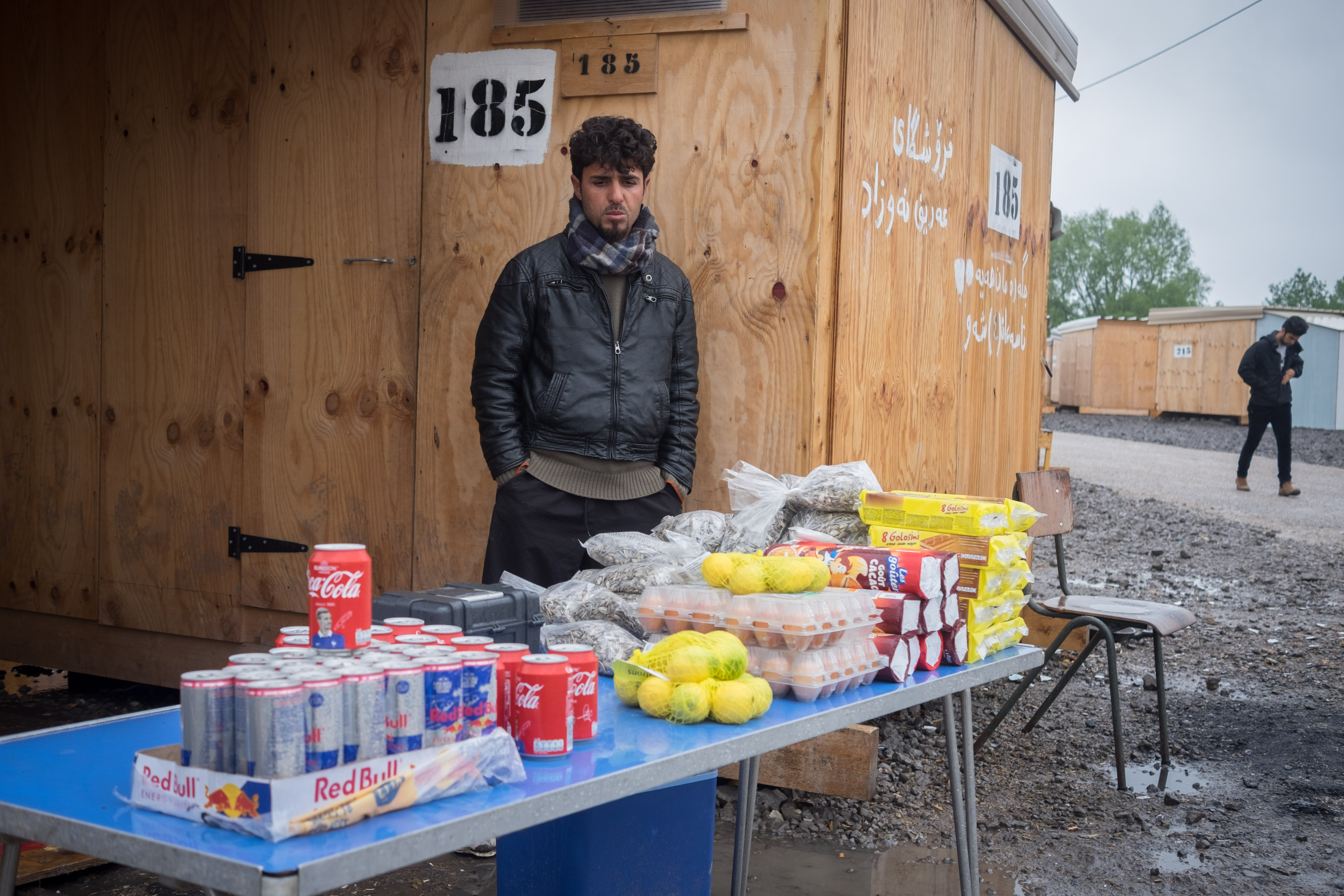
An Iranian asylum seeker poses for a portrait with his produce. (Razan Alzayani)
When I first arrived at the camp, many of them were naturally skeptical of my presence. So many journalists, so many photographers have come, people would tell me, but then they forget about us when they go, and nothing has changed. Like many other journalists who have come here before me, I couldn’t promise them change. All I could promise was that I would relay their stories with honesty and treat them with dignity.
The origins of Camp de la Liniere began when hundreds of mostly Kurdish refugees started entering the woods of Grande-Synthe in 2015 and constructed their own “jungle” that October. A brutal winter followed, and this jungle was in a worse state than the bigger one down the road in Calais. The premises quickly devolved into rat-infested muddy squalor. Access to basic necessities such as toilets and showers was limited. Some media organizations dubbed the makeshift settlement Europe’s worst refugee camp.
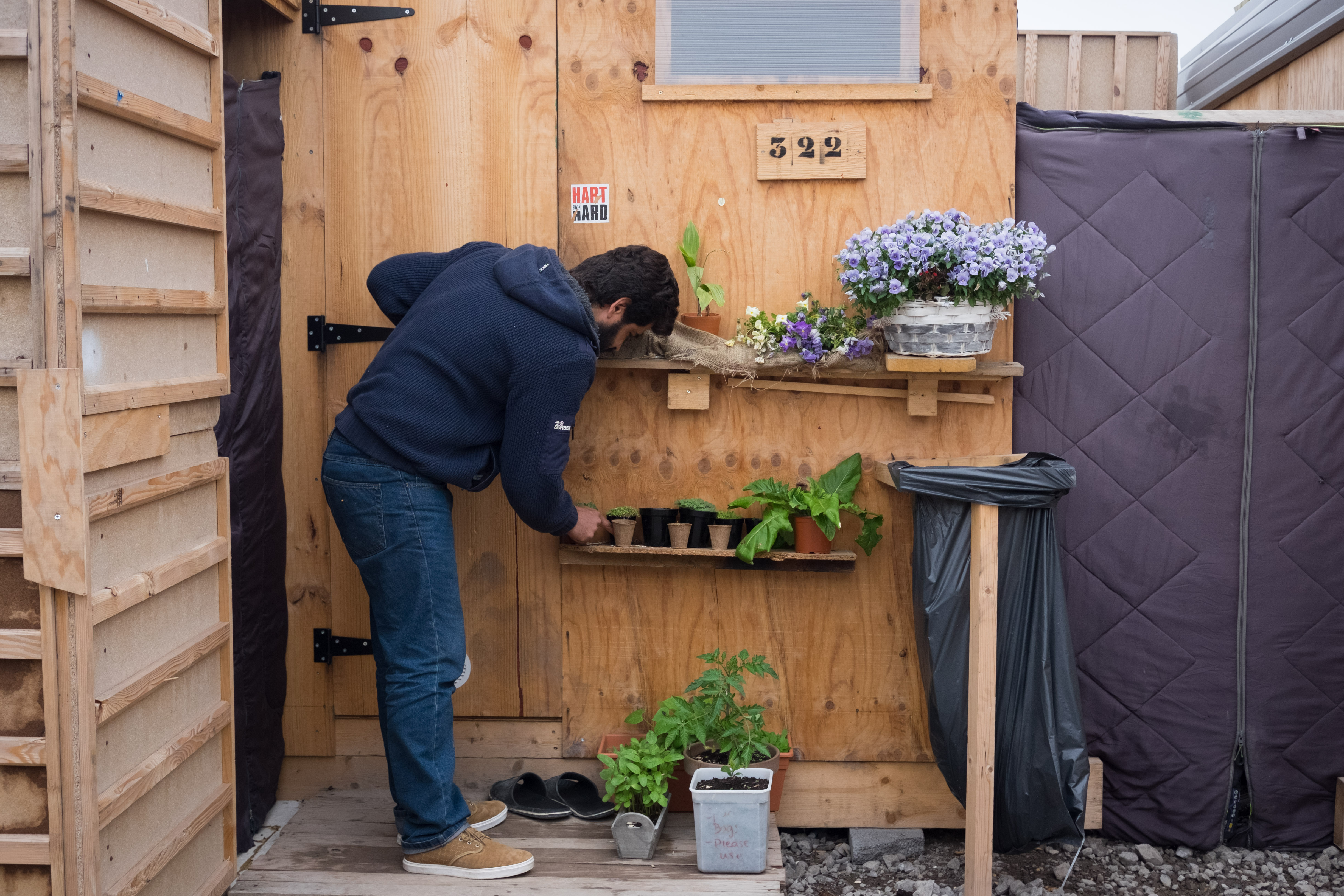
Beshwar Hassan, from Iraqi-Kurdistan, waters his plants outside his cabin. (Razan Alzayani)
The local mayor, Damien Careme, began a long battle with bureaucracy to build a more humane settlement, called Camp de La Liniere, France’s first official refugee camp. He connected with Doctors Without Borders (MSF) to establish proper toilet facilities, businesses, a kitchen that caters to the camp three times a day, a women’s only area, a school, a health clinic and even a refugee cinema. The camp officially opened in March of 2016 and welcomed hundreds of refugees in to take up shelter in little plywood sheds.
The mayor’s efforts certainly improved conditions for many migrants and refugees. But over the recent winter months, a rodent infestation has taken a toll on health and hygiene, and the cold winter winds permeate all too easily through the plywood cabins that refugees live in. Local authorities say the camp is not open to new arrivals, and they hope to completely close the camp at some point this year. If this happens, it will leave hundreds of people stranded and without shelter.

The people-smuggling industry has a turnover of $5.3-6.4 million (5-6 million euros) per year. This map shows the smuggling routes from Iraqi Kurdistan to the U.K. and how remittances are paid under the hawala system. (Kerning Cultures)
Many asylum seekers in the camp try to move forward to the U.K. using the hawala system, an ancient form of trust-based money transfer dating back to the medieval period, in which refugees provide promissory notes to smugglers.
It was late afternoon when I prepared to leave the camp last summer, which for camp residents is the time to wash, line up for food, hang around, make some calls and watch night fall. For others, it is the time they attempt to cross over to the U.K. Most will likely to fail, walk back to the camp, sleep, eat, rinse and repeat. The only reason people are living here is to leave.
Listen to the full episode Border(less) on Kerning Cultures.
The views expressed in this article belong to the author and do not necessarily reflect the editorial policy of Refugees Deeply.
